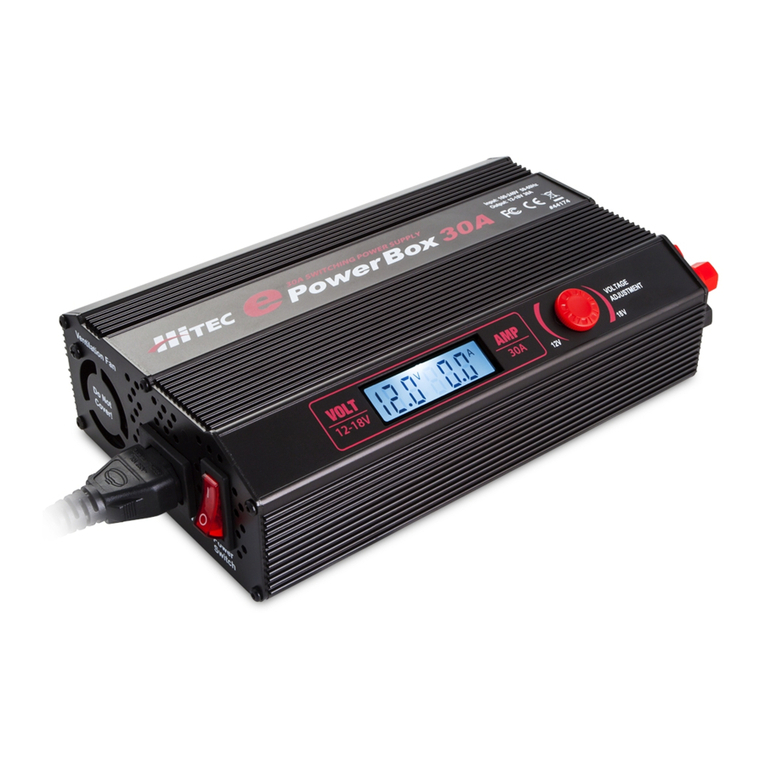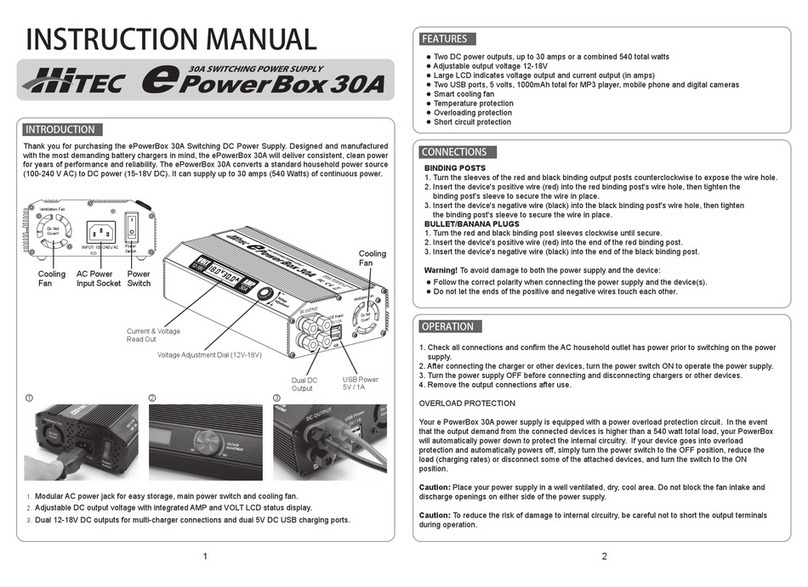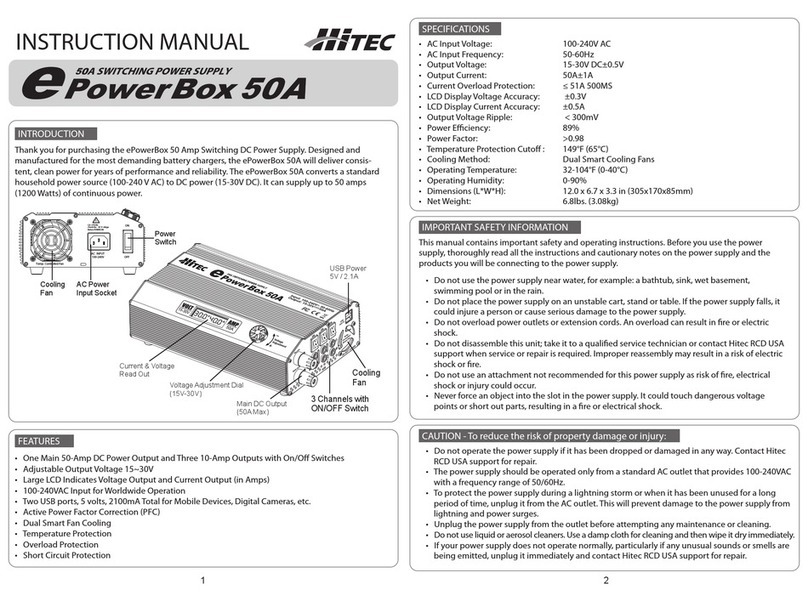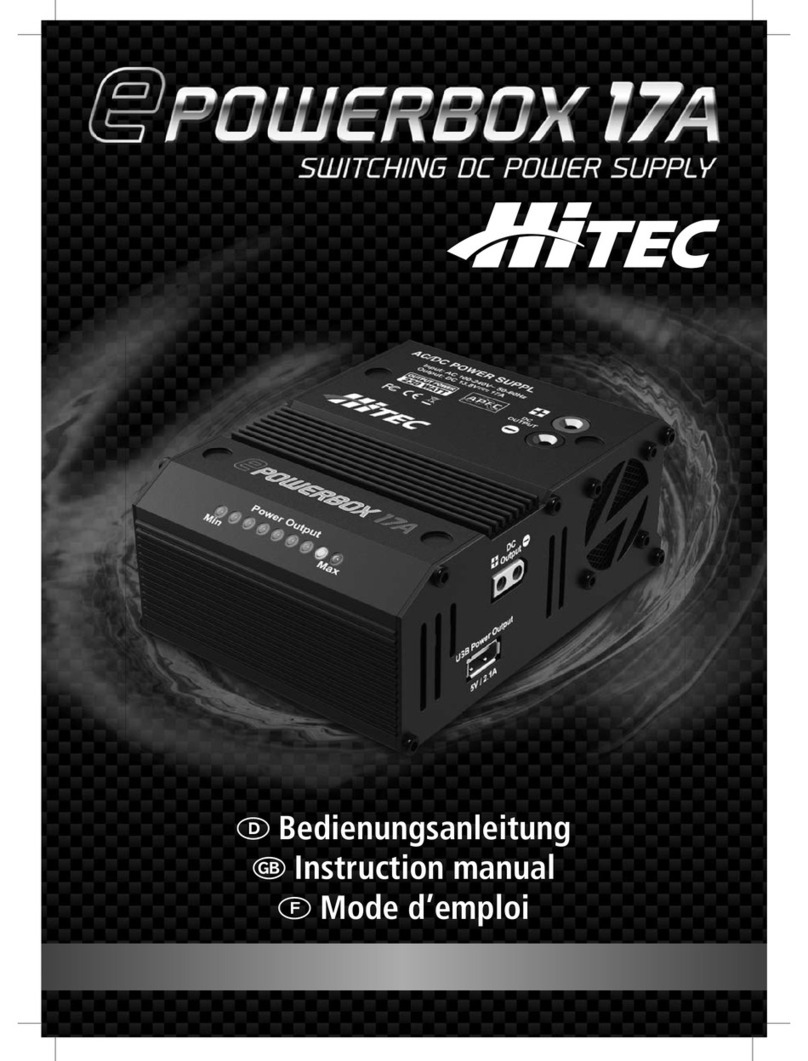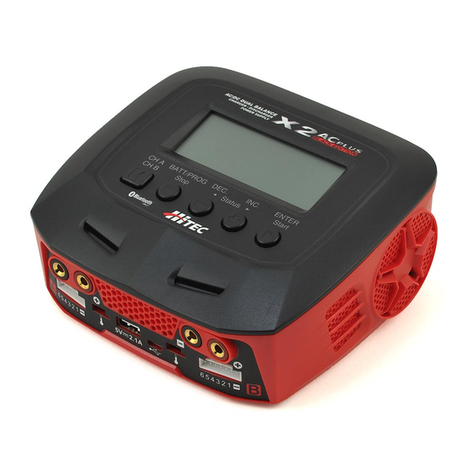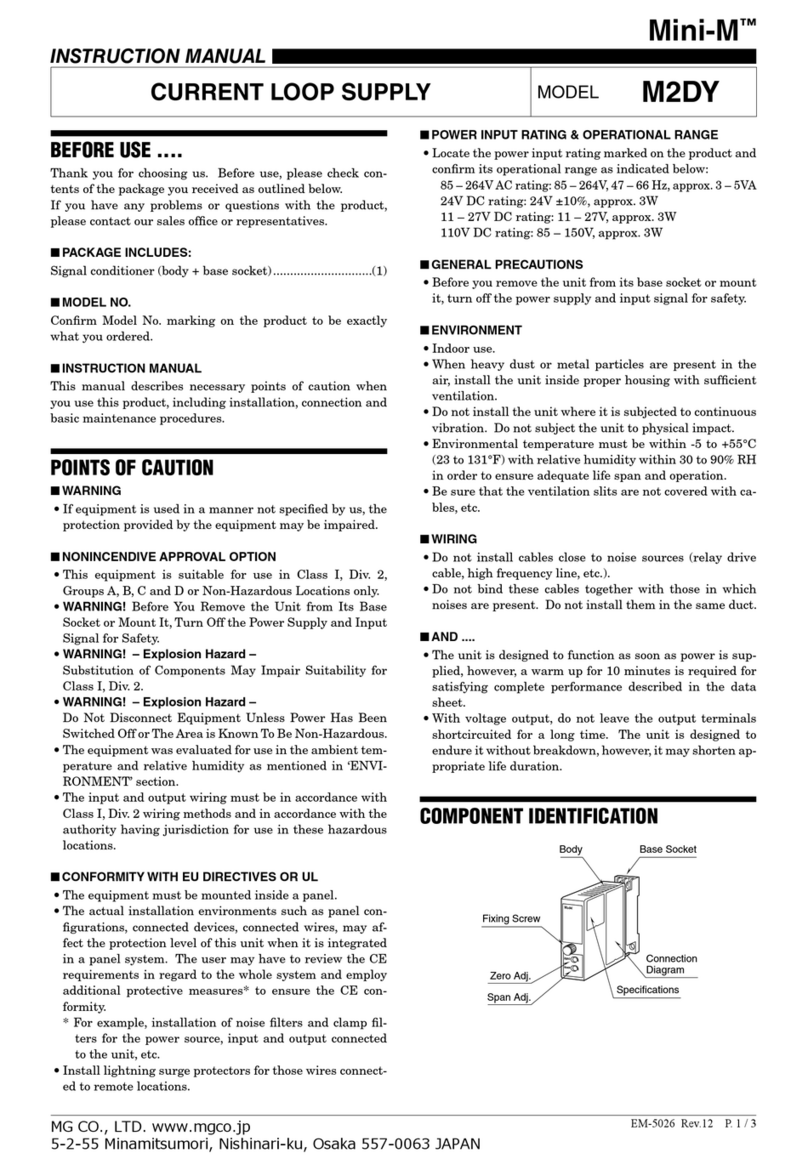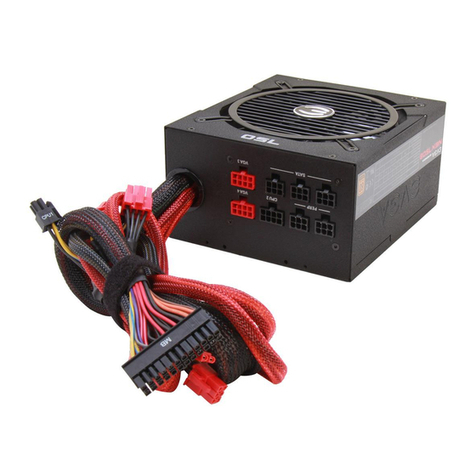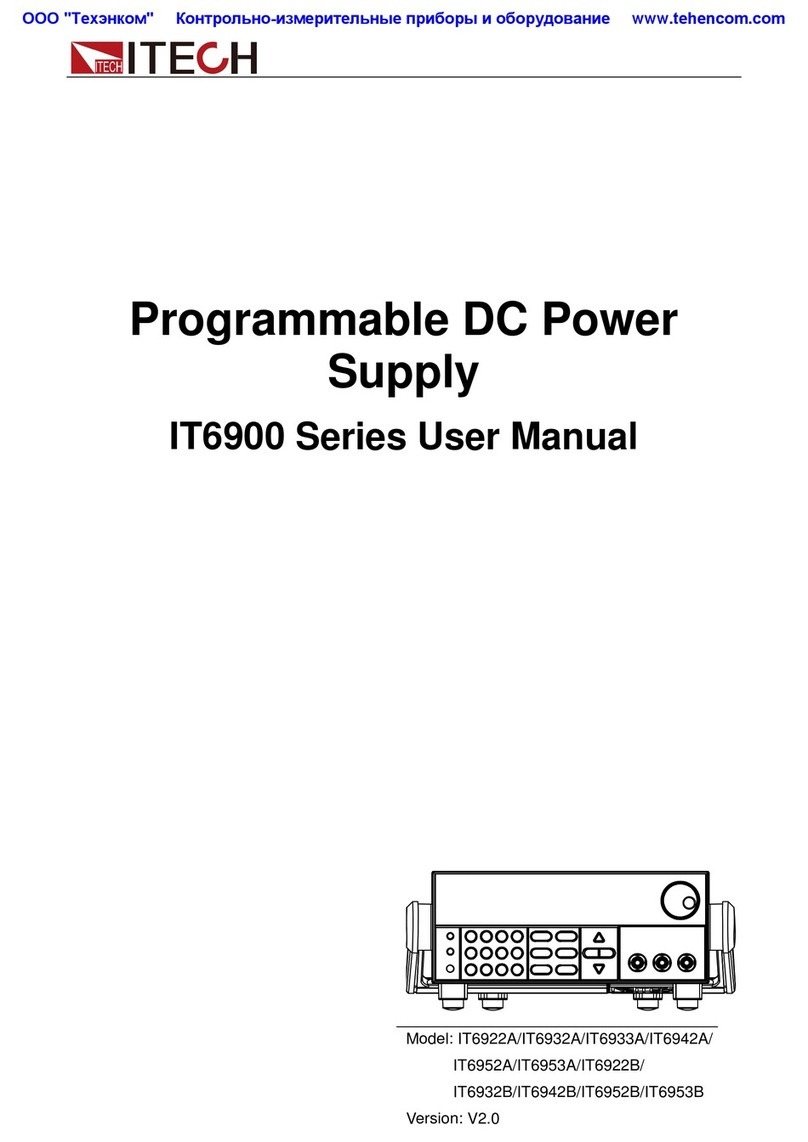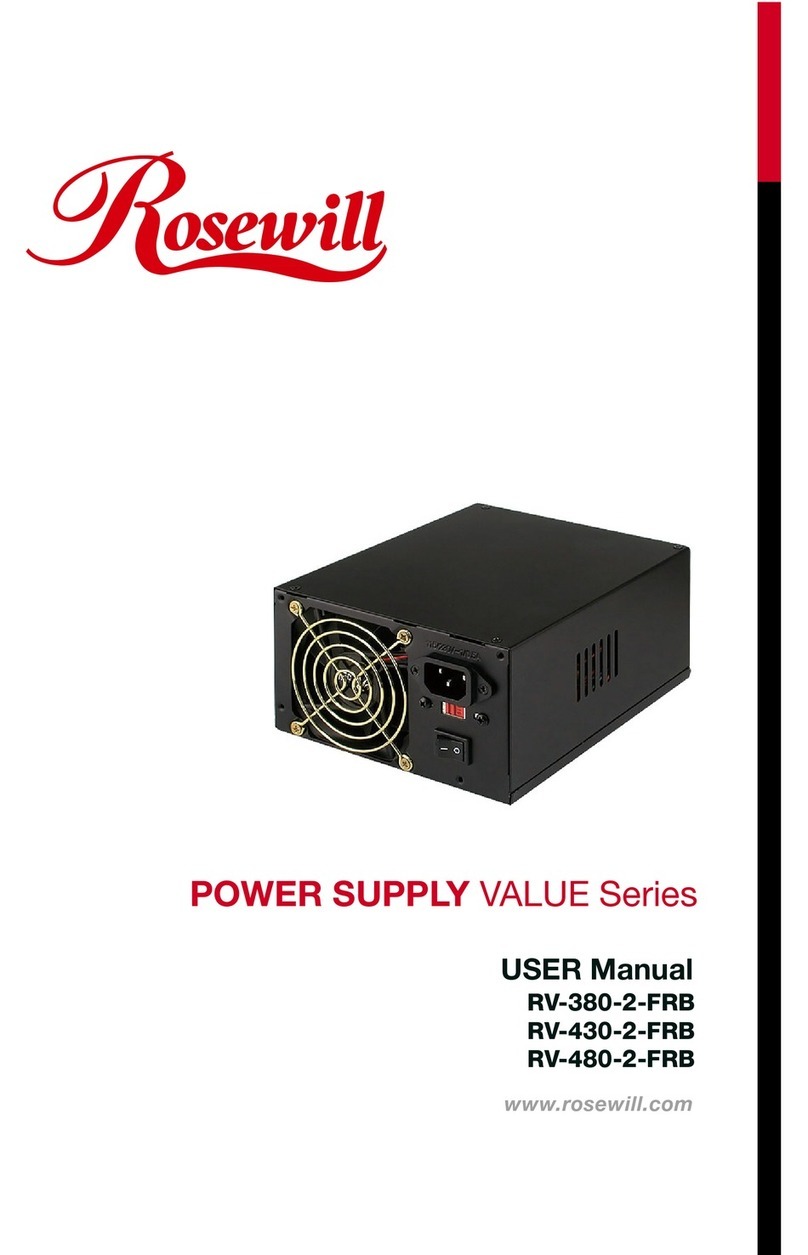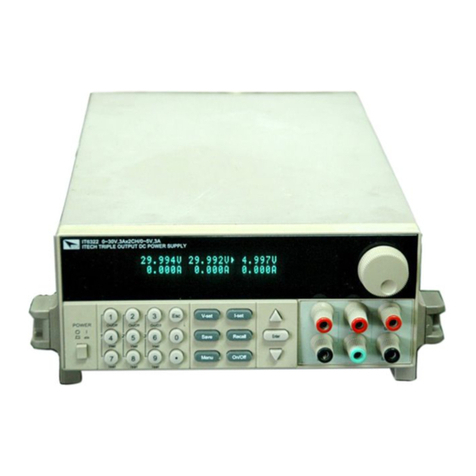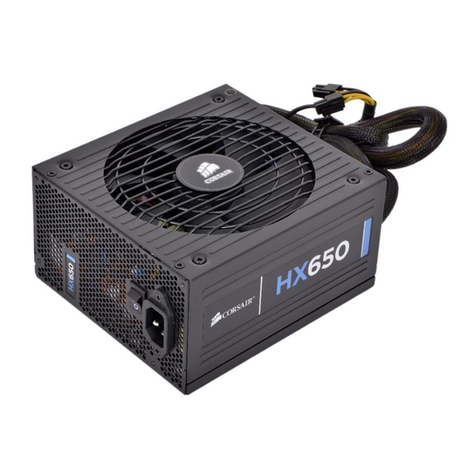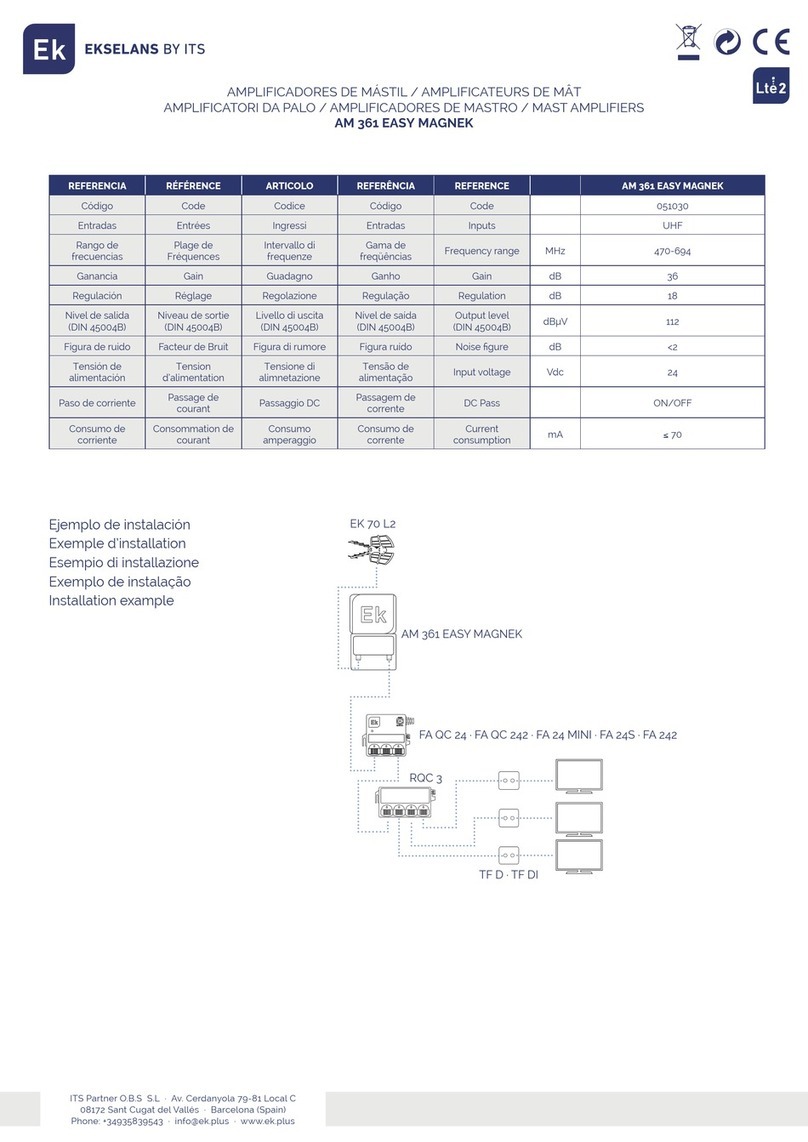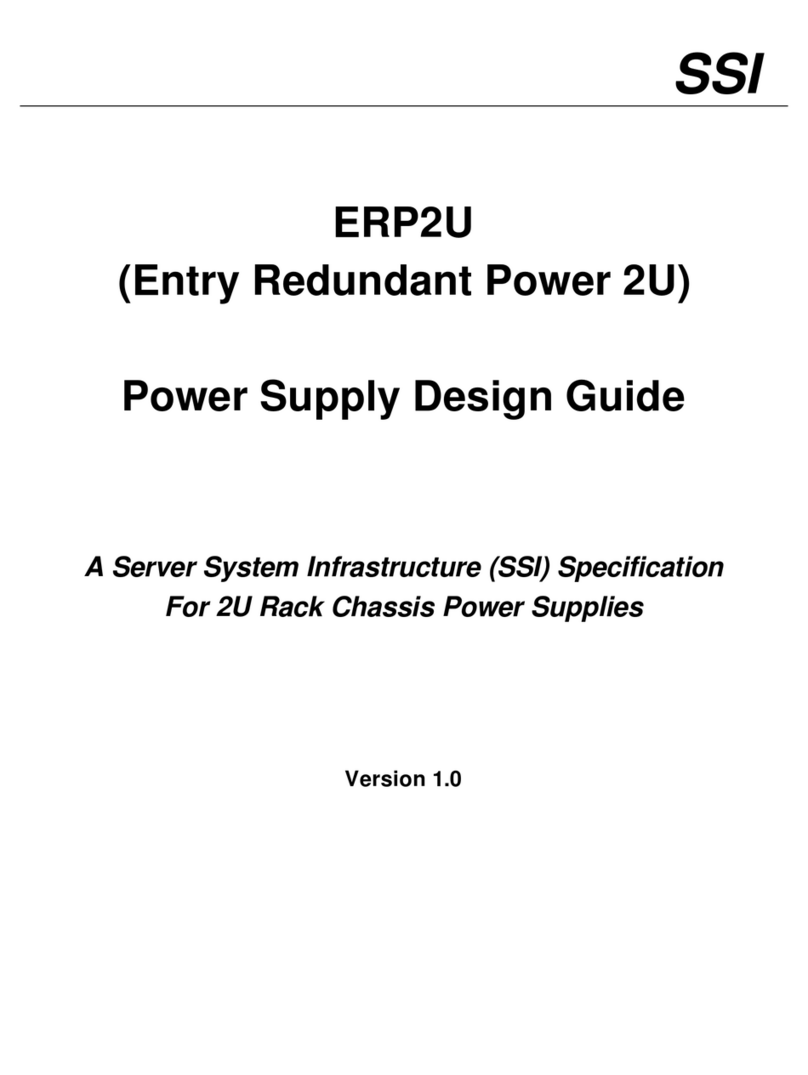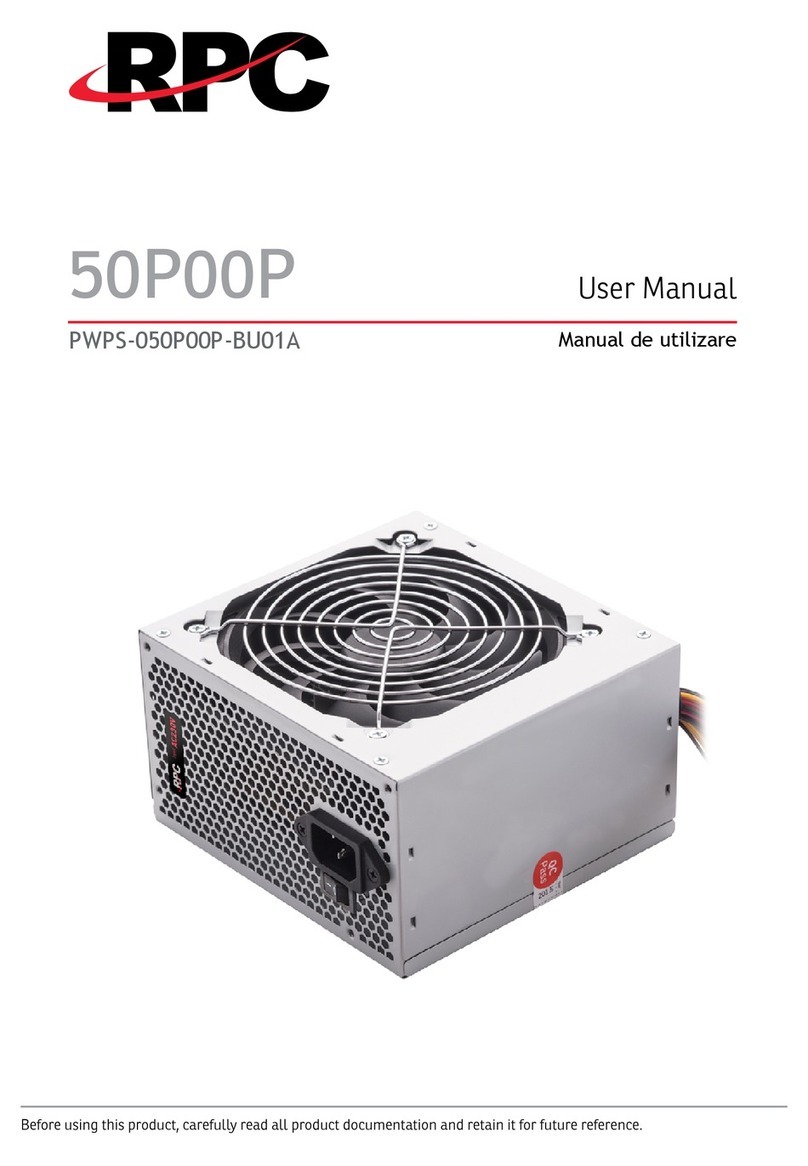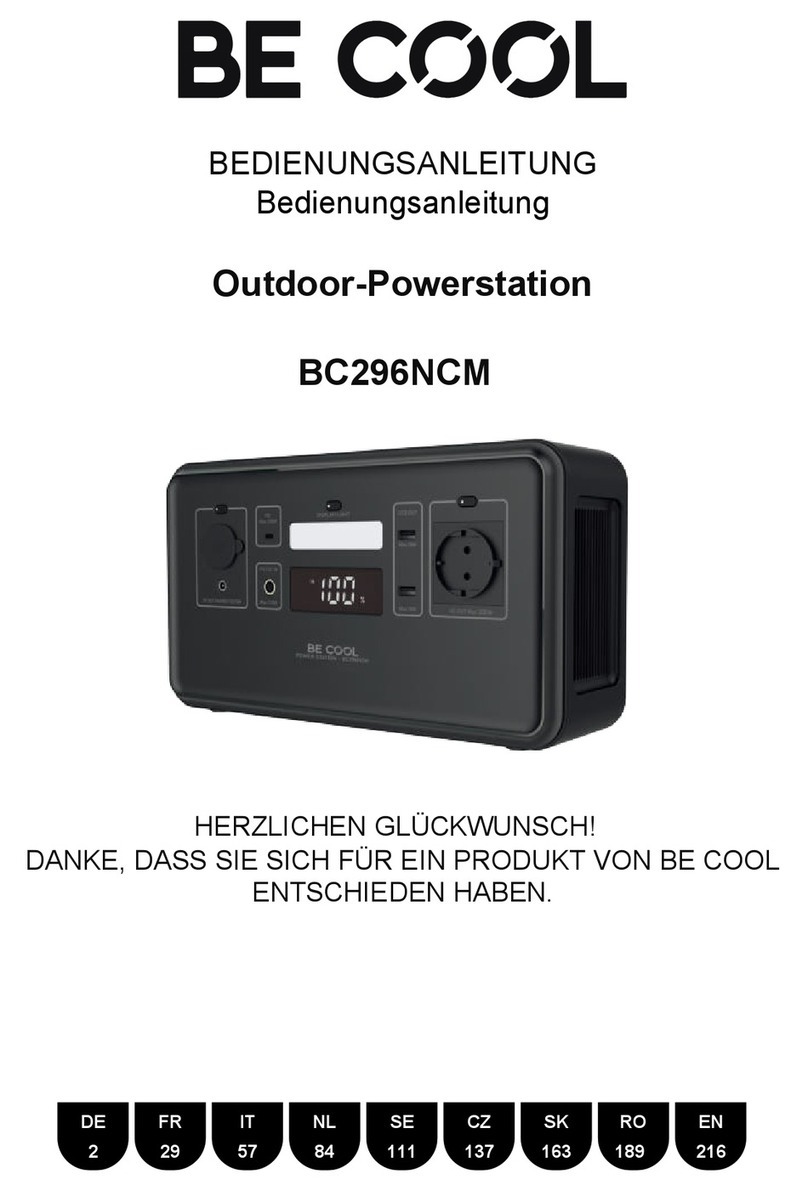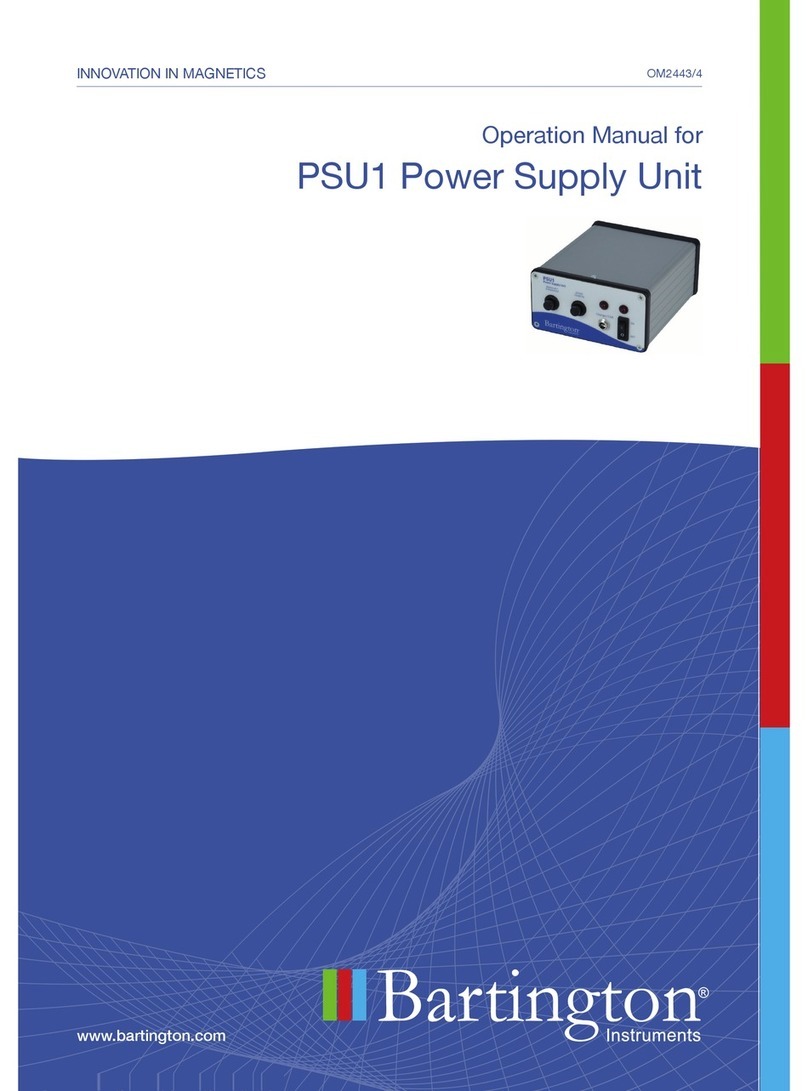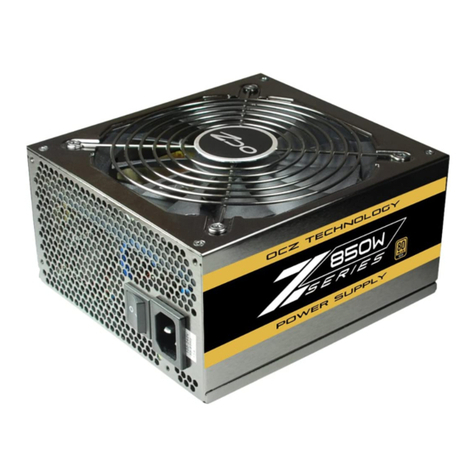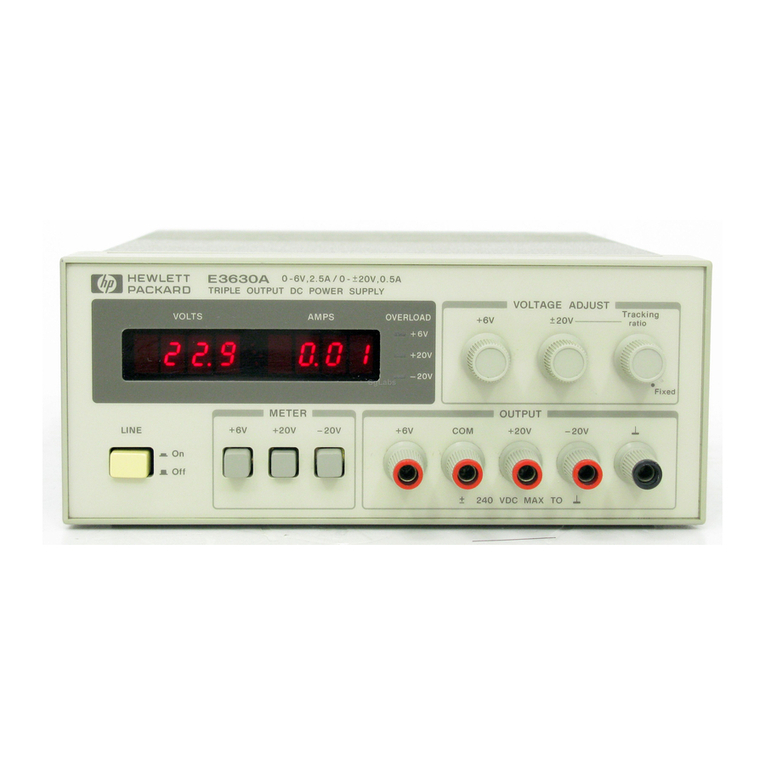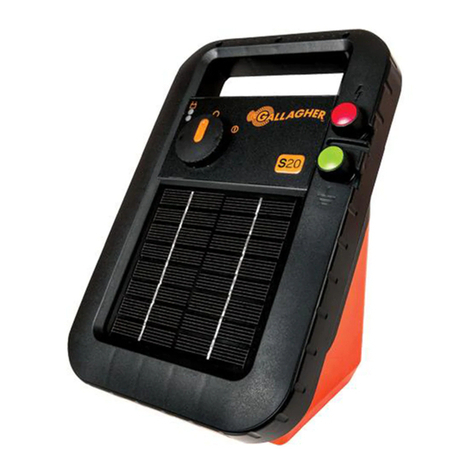Hi-Tec RDX2 1000 User manual

WARNING: THE CHARGING AND DISCHARGING OF RC HOBBY BATTERIES CAN BE
DANGEROUS. FAILURE TO FOLLOW THE INSTRUCTIONS AND WARNINGS IN THIS
MANUAL MAY RESULT IN PROPERTY DAMAGE AND/OR LOSS OF LIFE.
AC/DC DUAL PORT CHARGER
DISCHARGER / POWER SUPPLY
OPERATION MANUAL
V1.1

2
Table of Contents
Introduction...................................................................................................................................3
Warnings and Safety Notes.............................................................................................................4
Contents of Charger Package...........................................................................................................7
Optional External Discharger...........................................................................................................7
Charger Layout...............................................................................................................................8
Charger Specifications....................................................................................................................9
Program Flow Chart.................................................................................................................10-11
Charger Features.....................................................................................................................12-13
Explanation of Buttons.................................................................................................................14
Power and Battery Connection......................................................................................................15
Charger Operation...................................................................................................................16-17
Lithium Battery Program (LiPo/LiFe/Lilo/LiHV)........................................................................18-19
NiMH/NiCd Battery Program....................................................................................................20-21
Pb Lead-Acid Battery Program................................................................................................21-22
External Discharge.......................................................................................................................23
Charge Master..............................................................................................................................24
Battery Analyzer......................................................................................................................24-25
DC Power......................................................................................................................................25
Optional Parts..............................................................................................................................26
Charger Settings...........................................................................................................................26
System Settings............................................................................................................................27
Warning and Error Messages.........................................................................................................28
Firmware Upgrade Notice.............................................................................................................29
Conformity Declaration.................................................................................................................29
Regulatory Information / Compliance...........................................................................................30
Warranty, Service and Repair...................................................................................................30-31

3
Introduction
Congratulations on purchasing Hitec’s RDX2 1000 Dual Port Charger / Discharger / Power Supply.The RDX2 1000
features independent circuits allowing you to charge two batteries simultaneously, regardless of chemistry or
capacity.The RDX2 1000 also features integrated balancing for six-cell Lithium-Polymer (LiPo), Lithium-Ferrite
(LiFe) and Lithium-Ion (LiIo), as well as the latest high voltage Lithium-Polymer (LiHV) batteries.
Although simple to use, the RDX2 1000 does require some basic knowledge for successful and safe
operation.The operating instructions included here are designed to ensure that you quickly become
familiar with its functions. It is important that you read through this manual in its entirety. Read
attentively and completely the Operating Instructions,Warning and Safety Notes BEFORE attempting to
use your new charger for the rst time.
Please read this entire operating manual before using the RDX2 1000 Charger. If you
are unsure of its proper operation after reading the manual, please seek advice from an
experienced hobbyist or someone familiar with proper battery charging procedures.
THE CHARGING AND DISCHARGING OF RC HOBBY BATTERIES CAN BE DANGEROUS.
FAILURE TO FOLLOW THESE EXPLICIT WARNINGS CAN RESULT IN PROPERTY DAMAGE
AND/OR LOSS OF LIFE.
! NEVER LEAVE YOUR CHARGER UNATTENDED WHILE IN OPERATION.
! NEVER CHARGE ON OR AROUND COMBUSTIBLE MATERIALS.
! NEVER CHARGE A DAMAGED BATTERY PACK.
! LOW COST, NO-NAME BATTERY PACKS POSE THE MOST DANGER. WE RECOMMEND YOU ONLY
USE BATTERY PACKS THAT ARE SOLD AND WARRANTIED BY A REPUTABLE COMPANY.
! IT IS HIGHLY RECOMMENDED THAT YOU UTILIZE A SAFETY DEVICE SUCH
AS A STEEL CASE OR LiPo SACK™ WHILE CHARGING LITHIUM CHEMISTRY BATTERIES.
! IT IS HIGHLY RECOMMENDED THAT YOU KEEP AN OPERABLE “CLASS A”FIRE EXTINGUISHER IN
THE CHARGING AREA.
FAILURE TO FOLLOW THESE WARNINGS CAN BE CONSIDERED NEGLIGENCE BY THE OPERATOR
AND MAY NEGATE ANY CLAIMS FOR DAMAGES INCURRED.
Warning

4
Warnings and Safety Notes
Warning
Caution
TipWarning
Note
Hitec Group USA, Inc. (Hitec RCD USA) will not be held responsible for any damages or injuries that may occur
by persons who fail to follow these warnings or who fail to properly follow the instructions in this manual.
Warning: Be sure to read this section for your own safety.
Tip: This section will help you maximize the performance of your charger.
Note: This section will provide more detailed explanations.
Caution: Be sure to read this section to prevent accidents and damage to
your charger.
These warnings and safety notes are of the utmost importance.You must follow these instructions for
maximum safety. Failure to do so can damage the charger and the battery and in the worst cases, may
cause a re.
NEVER LEAVE THE CHARGER UNATTENDED WHILE IT IS CONNECTED TO ITS POWER
SOURCE. IF ANY MALFUNCTION IS FOUND, TERMINATE THE PROCESS AT ONCE AND
REFER TOTHE OPERATION MANUAL.
! The allowable AC input voltage is 100 - 240V AC
! The allowable DC input voltage is 11-18V DC.
! Keep the charger away from dust, damp, rain, heat, direct sunlight and excessive vibration.
! If the charger is dropped or suers any type of impact, it should be inspected by an
authorized service station before using it again.
! This charger and the battery should be put on a heat-resistant, non-ammable and
non-conductive surface.
! Never place a charger on a car seat, carpet or similar surface. Keep all ammable
volatile materials away from the operating area.
! Make sure you know the specications of the battery to be charged or discharged to
ensure it meets the requirements of this charger. If the program is set up incorrectly,
the battery and charger can be damaged.
! Fire or explosion can occur due to overcharging.
! Never attempt to charge or discharge the following types of batteries:
• A battery tted with an integral charge circuit or a protection circuit.
• A battery pack which consists of dierent types of cells (including dierent manufacturer’s cells).

5
Warning
• A battery that is non-rechargeable (these pose an explosion hazard).
• A faulty or damaged battery.
• Batteries installed in a device or which are electrically linked to other components.
• Batteries that are not expressly stated by the manufacturer to be suitable for the currents
the charger delivers during the charge process.
PLEASE CHECK THE FOLLOWING POINTS BEFORE YOU BEGIN CHARGING:
• Did you select the appropriate program suitable for the type of battery you are charging?
• Did you set up the adequate current for charging or discharging?
• Have you checked the battery voltage? Lithium battery packs can be wired in parallel
and in series, i.e. a 2-cell pack can be 3.7V (in parallel) or 7.4V (in series).
• Have you checked that all connections are rm and secure?
• Make sure there are no intermittent contacts at any point in the circuit.
LiPo LiIo LiFe LiHV NiMH NiCd Pb
Nominal
Voltage 3.7V/cell 3.6V/cell 3.3V/cell 3.7V/cell 1.2V/cell 1.2V/cell 2.0V/cell
Max.Charge
Voltage 4.2V/cell 4.1V/cell 3.6V/cell 4.35V/cell 1.5V/cell 1.5V/cell 2.4V/cell
Storage
Voltage 3.8V/cell 3.7V/cell 3.3V/cell 3.90V/cell n/a n/a n/a
Allowable
FastCharge ≤1C ≤ 1C ≤ 4C ≤1C 1C-2C 1-2C ≤0.4C
Min.
Discharge
Voltage
3.0-3.3V/
cell
2.9-3.2V/
cell
2.6-2.9V/
cell
3.1-3.4V/
cell
0.1-1.1V/
cell
0.1-1.1V/
cell
1.8~2.0V/
cell
Standard Battery Parameters
WHEN ADJUSTING YOUR RDX2 1000 CHARGING PARAMETERS, BE SURE
YOU SELECT THE PROPER BATTERY TYPE AND CELL VOLTAGE FOR THE TYPE
OF CELL YOU ARE CHARGING. CHARGING BATTERIES WITH THE WRONG
SETTINGS MAY CAUSE THE CELLS TO BURST, CATCH FIRE OR EXPLODE.
Warnings and Safety Notes

6
Charging
Before charging your batteries, it is critical that you determine the maximum allowable charge rate for
your batteries.The RDX2 1000 is capable of charging at high rates that may not be suitable or safe for your
particular batteries. For example, Lithium cells are typically safe to charge at 1C, or the total mAh÷1000.
A 1200mAh battery would have a 1C charge rate of 1.2 amps. A 4200mAh battery would have a 1C charge
rate of 4.2 amps. Some manufacturers are oering Lithium cells that can be charged at greater than 1C but
this should ALWAYS be veried before charging a Lithium battery at rates higher than 1C.Voltage is just
as critical as the charging amperage rate and this is determined by the number of cells in series, or“S”. For
example, a 3S LiPo is rated at 11.1 volts (“S”multiplied by a single LiPo cell with a nominal voltage of 3.7
volts DC. 3 cells x 3.7 volts each equals 11.1 volts DC).
Connect the battery’s main leads to the charger output: Red is positive and black is negative. Keep in
mind that the gauge or thickness of your charging leads from the RDX2 1000 to your battery must be of
an acceptable current rating to handle the applied charge current. For maximum safety and charging
eectiveness, always match or exceed the main battery lead rating when assembling or selecting your
charging leads. If you charge a battery at a high current rate (amperage) with a charging lead not rated for
the chosen amperage, the wire could get hot, catch re, short out and/or potentially destroy your battery
and the charger.When in doubt, always use a higher gauge wire (lower AWG number). It is common to see
charging leads constructed of 14AWG, 16AWG or 18AWG wire.
Always refer to recommendations from your battery manufacturer for your specic battery type and size
before initiating a charge or discharge process.
Do not attempt to disassemble or modify ANY battery packs.
Discharging
The RDX2 1000 discharging functions are for two specic purposes:
• Refreshing the capacity of a Nickel-based battery that has lost capacity over time (NiMH or NiCd).
• Reducing the voltage of a Lithium battery for safe storage.
LITHIUM CHEMISTRY BATTERY PACKS SHOULD ONLY BE DISCHARGED TOTHEIR
MINIMUM SAFE VOLTAGE, NO LOWER. DEEP DISCHARGING A LITHIUM CELLWILL DO
PERMANENT DAMAGE. REFERTO THE STANDARD BATTERY PARAMETERS TABLE ON
PAGE 5 OF THIS MANUAL FOR MINIMUM DISCHARGEVOLTAGES.
LiPo & LiHV Charge/Discharge Cycling
Lithium batteries are known to reach full capacity after a break-in period of about 10 charge/discharge
cycles.We do not recommend you use the RDX2 1000 charger to do this; normal use and recharging will
achieve the same results. If you wish to perform a Lithium break-in on the bench with the RDX2 1000,
discharging to minimum acceptable voltages and performing a balance charge at 1C maximum rate is
recommended. If you choose to break in your Lithium batteries under normal use, charging at only 1C for
the rst ten cycles will help ensure full performance and service life from your Lithium cells.
Warnings and Safety Notes
Warning

7
1
1. RDX2 1000 Charger
2. AC Power Cord
AD350 Analyzer & Discharger
Part No. 44405 (Sold Separately)
3. Parallel Charging Cable
4. 12V Power Cord with 4mm Bullets &Clamps
2
3
4
Precisely and visually benchmark your battery with the AD350¹ Discharger and its Battery
Analyze Software².
1. AD350 Discharger needs to be purchased separately.
2. Battery Analyze Software is free to download.
Contents of Charger Package
OPTIONAL EXTERNAL DISCHARGER

8
LCD Display
Stop Any Charge Processes
and Exit Menu to Main Screen
Toggle Between Port A & B
Carrying Handle
Balance Port
AC Input 100-240V
XT60 Input
Smart Ventilation Fan
Temperature Sensor Port
(Optional for NiMH/NiCd)
Balance lead Socket
AlterValues
See the Status of Individual
Cells in Balance Charge Mode
Start Charge Processes
and EnteringValues
Ventilation Slots
USBType-C PC Connect
DC Input
External Discharge
Port Connections
Charger Layout

9
Item Option Specication
InputVoltage AC 100-240V (50/60Hz)
DC 10-30V
Input Current 35A MAX
Charge Power AC 450W MAX
DC 1000W MAX
Discharge Power
Main Port 10W
Balance Port 37W MAX
External Discharge 350W MAX
Charge Current
LiPo/LiFe/LiIo/LiHV/NiMH/
NiCd/Pb 0.1-20.0A
Parallel 20.0-35.0A
Discharge Current
LiPo/LiFe/LiIo/LiHV/NiMH/
NiCd/Pb 0.1-2.0A
External Discharge
*Using Hitec AD350
Discharger - Sold Separately.
0.1-40.0A
Balance Current LiPo/LiFe/LiIo/LiHV 1.5A MAX
Battery Type
LiPo/LiFe/LiIo/LiHV 1-6S
NiMH/NiCd 4-15S
Pb 3S/6S/12S
Operation
LiPo/LiFe/LiIo/LiHV Balance, Charge, Discharge, Storage,
Parallel Cycle
NiMH/NiCd Charge, Cycle, Re-peak, Discharge
Pb Normal, AGM Charge, Cold Charge,
Discharge
DC Output Voltage 5-27V
Current 1.0-15.0A
Size L xW x H 7.5 x 6.0 x 3.9 in.
NetWeight 3.0 lbs.
Charger specifications

10
Twin-Channel Charger:
Hitec’s RDX2 1000 allows you to plug two batteries into the charger simultaneously. The batteries being
charged do not need to have the same conguration.You can connect dierent battery chemistries
(NiMH/ NiCd/LiPo/LiFe/Lilo/LiHV/Pb) into any of the charging ports.
Internal Independent Lithium Battery Balancer:
The RDX2 1000 employs an individual-cell-voltage balancer.
Independent Cell Balancing While Discharging:
During the discharge process, the RDX2 1000 monitors and balances each cell of the battery
individually. If the voltage of any single cell reads abnormally, an error message will display and end
the process automatically.
Adaptable to Various Types of Lithium Batteries:
The RDX2 1000 will charge a variety of Lithium batteries such as LiPo, LiFe, LiIo and the new higher
voltage LiHV batteries.
Multiple Lithium Battery Charge Modes
Balance Charge:
In this mode, each cell is monitored and if some are at higher voltages than the others, they are
discharged to equalize the voltage between all the cells and keep the pack in optimum condition.We
highly recommend using Balance Charge as it is the safest and best way to charge Lithium batteries.
Charge:
This mode charges the pack without balancing the cells. Connecting the balance lead is still
recommended so you can monitor each cell’s voltage manually by scrolling to the left with the Jog Dial.
Note: If the cells are more than 0.02V o from each other, Balance Charge should be used to equalize
the pack.
Storage:
This mode charges or discharges the pack to 50% capacity so that it can be safely stored when not in
normal use. If you do NOT plan on using your Lithium pack within 24-48 hours of being fully charged or
fully discharged, Storage Mode is recommended to optimize maximum lifespan and performance and
reduce the risk of the gases forming, causing the pack to pu.
Terminal Voltage Control (TVC):
For experienced users ONLY, the charger’s end voltage can be reset up to 0.05v/cell higher.
CHARGER FEATURES

11
Warning
Default setting is recommended. ONLY change in a controlled environment.
ALWAYS monitor the battery during the charge process.
Cyclic Charging / Discharging:
A battery can be cycled 1 to 5 times consecutively. This process is normally used for NiCd or NiMH packs
that have lost capacity over time. It can also be used with LiPo & LiHV packs in conjunction with the
AD350 Discharger to decrease internal resistance for more power in stock racing.
Re-Peak Mode of NiMH/NiCd Batteries:
In Re-Peak charge mode, the charger can peak charge the battery once, twice, or three times in a row
automatically. This function is useful for ensuring a full battery charge.
Delta-Peak Sensitivity for NiMH/NiCd:
This function determines the amount of voltage drop in MV that must be achieved for the Delta-Peak
algorithm to automatically terminate the charge process. This can be raised for packs that have a
tendency to“False Peak”at the default setting.
Battery Resistance Meter:
The user can check not only the MAIN pack voltage but each individual cell and its resistance as well.
Capacity Cut-O Limit:
This feature allows the user to set a limit for the maximum mAh’s that can be put into the pack. Once
this limit is reached, the charge process will automatically terminate, and“OVER CHARGE CAPACITY
LIMIT”will be displayed. Default is 12000mAh, so set this accordingly to the rated capacity of the
pack. To ensure the pack gets fully charged, this setting should be at least 10% higher than the rated
capacity on the pack or turned OFF
Safety Timer:
Protect your battery by setting a maximum time limit for charging. Once this limit is reached, the
charge process will automatically terminate, and“OVER TIME LIMIT”will be displayed. Default is 240
minutes, so adjust as needed depending on the charge rate and capacity of the pack.
Battery Charge Percentage:
The battery charge percentage is displayed in real time once you are charging.
Power Supply:
With the built in Power Supply function, you can power devices with up to 27V @ 15A.
NOTE: IF THE POWER SUPPLY FUNCTION IS ACTIVATED, CHARGING IS DISABLED.
Note

12
Note: The Flow Chart shows one port (Port A) as the example.The Flow Chart for Port B is identical.
Program Flow Chart

13

14
PORT:
STOP:
DOWN:
UP:
ENTER:
Toggle between Port A and B.
Stop the progress or return to a previous step or screen.
Navigate through the menus or decrease a parameter value.
Navigate through the menus or increase a parameter value.
Enter or store the parameters on screen, and start the program.
To alter the parameter value in the program, press the ENTER button to call out the
options menu then change the value by pressing the DOWN or UP buttons.
The value will be conrmed and stored by pressing the ENTER button.
To start the process, select the option of ENTER.
Press and hold the ENTER button for three seconds to enter into the system setting.
BEFORE YOU BEGIN CONNECTING YOUR BATTERY, MAKE SURE YOU HAVE READ
AND UNDERSTOOD ALL OF THE WARNINGS AND SAFETY INFORMATION CONTAINED
IN THIS MANUAL.
Warning
Explanation of ButtonS

15
1. Connecting to a power source
There are two options of inputs for the RDX2 1000, DC 10-30V and AC 100-240V.
AC 100-240V power source connection. 12V DC Battery / DC power supply connection.
2. Connecting the battery
TO AVOID SHORT CIRCUITS, ALWAYS CONNECT THE CHARGE LEADS TO THE CHARGER
FIRST, AND THEN TO THE BATTERY. REVERSE THE SEQUENCE WHEN DISCONNECTING
THE PACK.
i. LiPo Battery Connection
For safety reasons, it is highly recommended to charge Lithium batteries (LiPo, Lilo, LiFe and LiHV)
using Balance CHG mode, unless the battery comes without a balance wire.
The balance wire attached to the battery must be connected to the charger with the black wire
aligned with the negative marking. Ensure correct polarity!
ii. NiMH/NiCd or Pb Battery Connection
Warning
12V DC battery
or 11~30V DC
power supply
POWER AND BATTERY Connection

16
Initial Setup of the Charger
After connecting the battery, you are now ready to setup the charger to charge your specic type of battery.
When the charger is rst powered on, the last program selected will be displayed. If this is not the battery
you plan on working with, then you will need to make changes to the operation programming based on the
following instruction.
BEFORE SELECTING AN OPERATION, IT IS CRITICAL THAT YOU KNOW THE
TYPE OF BATTERY YOU ARE WORKING WITH AND WHAT THE MANUFACTURER
RECOMMENDATIONS ARE FOR CHARGING OR DISCHARGING. FAILURE TO
FOLLOWTHE MANUFACTURER'S RECOMMENDATIONS CAN RESULT IN DAMAGE
TO THE BATTERY AND CREATE AN EXPLOSION HAZARD.
Available Operations
Depending on battery type, dierent operations will be available.This chart shows which operations are
available for the dierent types of batteries the RDX2 1000 is capable of working with.
Warning
Battery
Type Operation Operation Description
LiPo
Lilo
LiFe
LiHV
Balance CHG This mode is to balance charge the lithium battery based on the
charging rate. It can balance each cell of the battery.
Charge This mode is to charge the lithium battery based on the charging
rate selected.
Storage This mode is to store the battery via charging or discharging its voltage
to a specic storage value.
Discharge This mode is to discharge the lithium battery based on the discharging
rate selected.
Parallel This mode is to parallel charge the battery with a higher charge rate of
up to 35.0A.
Cycle
This mode is to cycle discharge>charge the lithium battery to get the
maximum power of the battery. It's only available under the Balance
CHG & Parallel charge mode for the lithium battery.
Charger Operation

17
Available Operations (continued)
Battery
Type Operation Operation Description
NiMH
NiCd
Charge This mode is to charge the NiMH/NiCd battery based on the
charging rate selected.
Re-Peak
In re-peak charge mode, the charger can peak charge the
battery twice in a row automatically. This is good for confirming
the battery is fully charged, and for checking how well the
battery receives fast charges.
Cycle_C_D
1 to 5 cyclic and continuous process of charge>discharge is
operable for refreshing and restoring the performance of NiMH/
NiCd batteries.
Cycle_D_C
1 to 5 cyclic and continuous process of discharge>charge is
operable for refreshing and restoring the performance of NiMH/
NiCd batteries.
Discharge This mode is to discharge the NiMH/NiCd battery based on the
discharging rate selected.
Lead
Acid
Pb
Normal This mode is to charge the Pb battery based on the charging
rate selected.
AGM Charge This mode is to charge the AGM battery based on the charging
rate selected.
Cold Charge This mode is to charge the Pb battery under a low temperature
based on the charging rate selected.
Discharge This mode is to discharge the Pb battery based on the
discharging rate selected.
BEFORE YOU BEGIN CHARGING YOUR BATTERY, MAKE SURE YOU HAVE READ
AND UNDERSTOOD ALL OF THE WARNINGS AND SAFETY INFORMATION
CONTAINED IN THIS ENTIRE MANUAL.
Warning
Charger Operation

18
The following ow chart is a reference to set the program settings.
Battery Cell Select
Task Select
Battery Type Select
ENTER Charge Setting
On the main interface, press the ENTER button to enter CHARGE SETTING.
Press the DOWN button to the option of Battery Cell, press the ENTER
button to call out the menu, and select the correct battery cells.
Press the DOWN button to the option of Battery Cell, press the ENTER
button to call out the menu, and select the correct battery cells.
Press the ENTER button to call out the battery type menu, and select LiPo.
Lithium Battery Program (LiPo/LiFe/LiIo/LiHV)

19
Condition Select
Discharge Current Select
Start Charge Process
Cycle Mode
Charge Current Select
Press the DOWN button to the Condition, call out the menu and select the
terminal charging voltage (The default of 4.20V is recommended).
Press the DOWN button to the Charge Current, call out the menu, and set
the discharge current.
Note: This function is only available in Discharge Mode.
Press the DOWN button to the Start function and the ENTER button to begin.
Note: Cycle mode will discharge rst and then charge. At the end of the
process, the battery will be ready to use.
Press the DOWN button to the Cycle, call out the menu and select cycle
counts.The cycle mode will only work when the cycle counts are selected.
Note: The cycle option is available only for Balance CHG and Parallel
charge modes.
Press the DOWN button to the Charge Current, call out the menu, and set
the charge current.

20
ENTER Charge Setting
Battery Cell Select
Condition Select
Task Select
Battery Type Select
On the main interface, press the ENTER button to enter CHARGE SETTING.
Press the DOWN button to the option of Battery Cell, press the ENTER
button to call out the menu, and select the correct battery cells.
Press the DOWN button to the Condition, call out the menu, and set the
delta voltage (The default is recommended).
Press the DOWN button to theTask, call out the menu, and select the
working mode.The working modes are Charge, Re-Peak, CYCLE_C_D,
CYCLE_D_C and Discharge.
Press the ENTER button to call out the battery type menu, and select NiMH.
The following owchart is a reference to set the program manually.
NiMH/NiCd Battery Program
Table of contents
Other Hi-Tec Power Supply manuals
